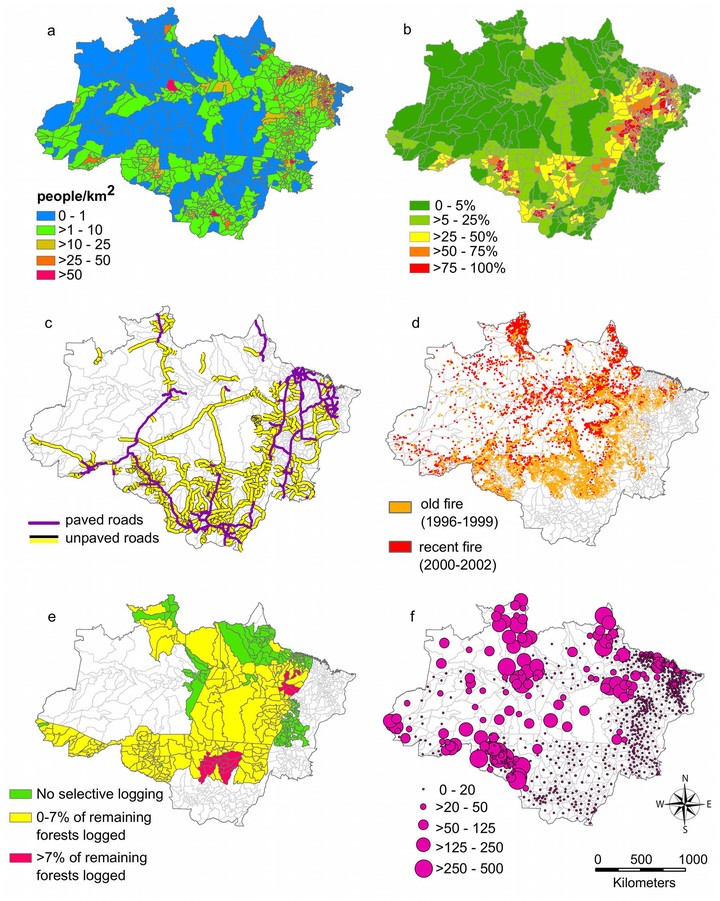
Abstract
Malaria is a significant public health threat in the Brazilian Amazon. Previous research has shown that deforestation creates breeding sites for the main malaria vector in Brazil, Anopheles darlingi, but the influence of selective logging, forest fires, and road construction on malaria risk has not been assessed. To understand these impacts, we constructed a negative binomial model of malaria counts at the municipality level controlling for human population and social and environmental risk factors. Both paved and unpaved roadways and fire zones in a municipality increased malaria risk. Within the timber production states where 90% of deforestation has occurred, compared with areas without selective logging, municipalities where 0-7% of the remaining forests were selectively logged had the highest malaria risk (1.72, 95% CI 1.18-2.51), and areas with higher rates of selective logging had the lowest risk (0.39, 95% CI 0.23-0.67). We show that roads, forest fires, and selective logging are previously unrecognized risk factors for malaria in the Brazilian Amazon and highlight the need for regulation and monitoring of sub-canopy forest disturbance.